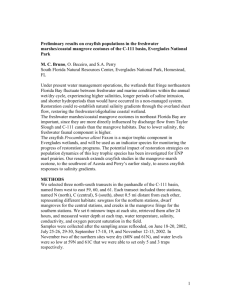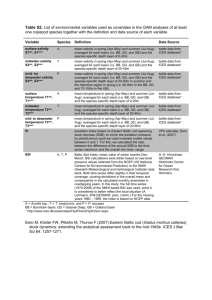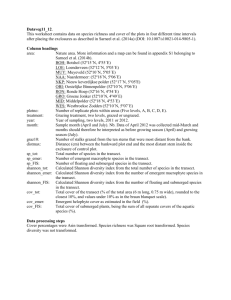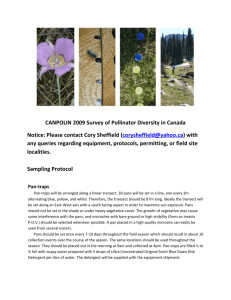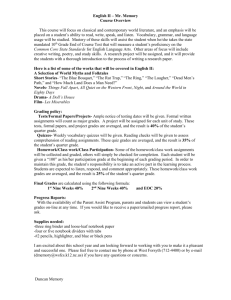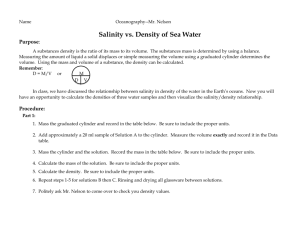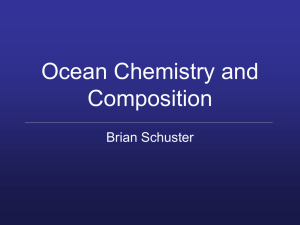jgrc20873-sup-0001-suppinfo01
advertisement
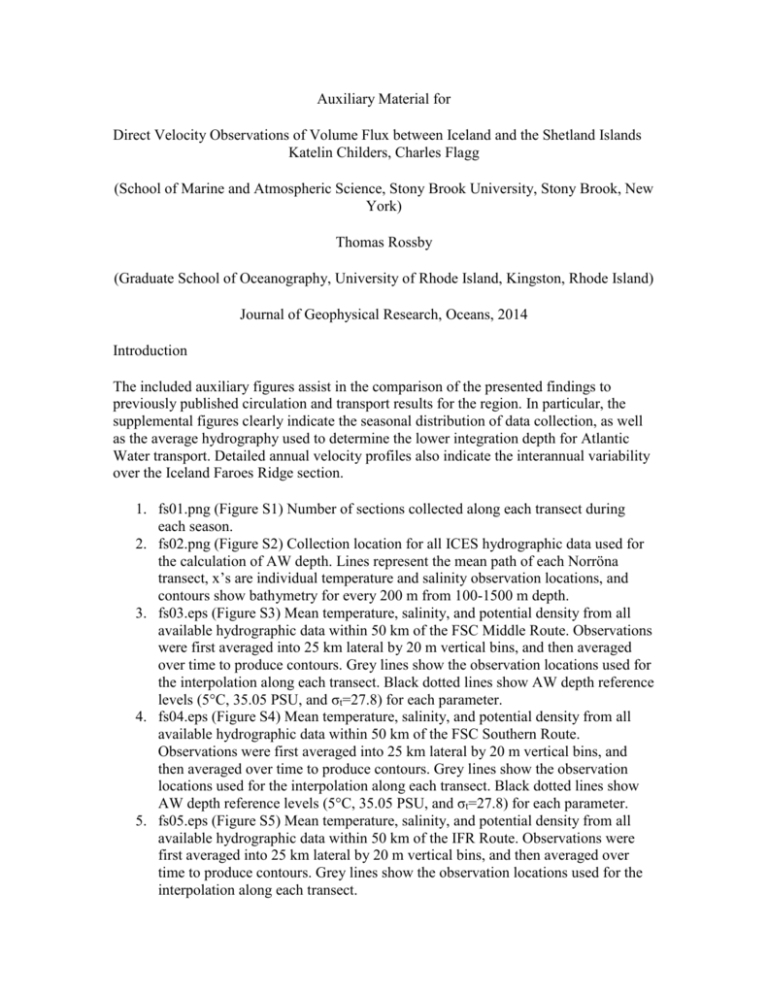
Auxiliary Material for Direct Velocity Observations of Volume Flux between Iceland and the Shetland Islands Katelin Childers, Charles Flagg (School of Marine and Atmospheric Science, Stony Brook University, Stony Brook, New York) Thomas Rossby (Graduate School of Oceanography, University of Rhode Island, Kingston, Rhode Island) Journal of Geophysical Research, Oceans, 2014 Introduction The included auxiliary figures assist in the comparison of the presented findings to previously published circulation and transport results for the region. In particular, the supplemental figures clearly indicate the seasonal distribution of data collection, as well as the average hydrography used to determine the lower integration depth for Atlantic Water transport. Detailed annual velocity profiles also indicate the interannual variability over the Iceland Faroes Ridge section. 1. fs01.png (Figure S1) Number of sections collected along each transect during each season. 2. fs02.png (Figure S2) Collection location for all ICES hydrographic data used for the calculation of AW depth. Lines represent the mean path of each Norröna transect, x’s are individual temperature and salinity observation locations, and contours show bathymetry for every 200 m from 100-1500 m depth. 3. fs03.eps (Figure S3) Mean temperature, salinity, and potential density from all available hydrographic data within 50 km of the FSC Middle Route. Observations were first averaged into 25 km lateral by 20 m vertical bins, and then averaged over time to produce contours. Grey lines show the observation locations used for the interpolation along each transect. Black dotted lines show AW depth reference levels (5°C, 35.05 PSU, and σt=27.8) for each parameter. 4. fs04.eps (Figure S4) Mean temperature, salinity, and potential density from all available hydrographic data within 50 km of the FSC Southern Route. Observations were first averaged into 25 km lateral by 20 m vertical bins, and then averaged over time to produce contours. Grey lines show the observation locations used for the interpolation along each transect. Black dotted lines show AW depth reference levels (5°C, 35.05 PSU, and σt=27.8) for each parameter. 5. fs05.eps (Figure S5) Mean temperature, salinity, and potential density from all available hydrographic data within 50 km of the IFR Route. Observations were first averaged into 25 km lateral by 20 m vertical bins, and then averaged over time to produce contours. Grey lines show the observation locations used for the interpolation along each transect. 6. fs06.png (Figure S6) Mean northeast velocities over the IFR by year from 2010 2012. 7. fs07.png (Figure S7) Hovmoeller diagram of the combined FSC Middle and Southern sections (note the Southern section has been shifted by 30 km toward the east for clearer alignment of the SSC with the Middle route).



